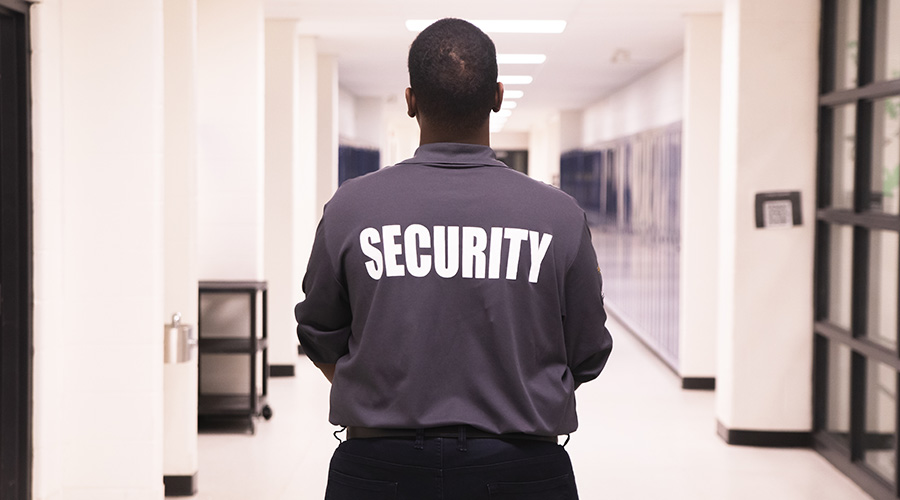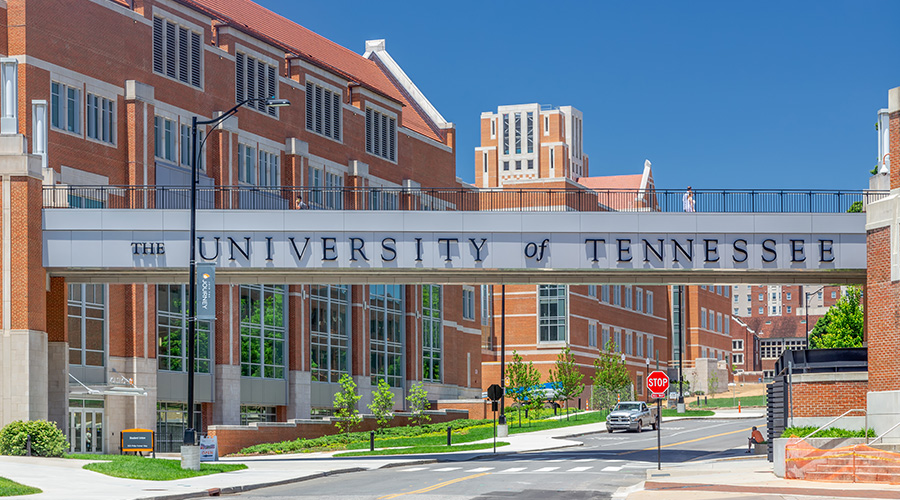Security Resources Can Help Building Owners Land Federal Tenants
Building owners interested in leasing space to the federal government, yet wary of navigating the complexities of meeting security requirements, take note: You’re not alone.
Meeting the security requirements of a federal agency might seem like a complicated matter at first simply because different spaces might need to be protected at different levels of security. However, neither the size of a contract nor the reputation of government negotiators should keep facility executives with qualified space and management processes from bidding on contracts.
First, the federal government is active in the tenant market. The trend of late is to solicit the building of new facilities for some of its agencies, including the Federal Bureau of Investigations, and to continually search for new space for other agencies. The General Services Administration (GSA) manages the process. Second, facility executives have ample resources to assist in their bids to attract government tenants.
Unlike the commercial world, where security is not codified and guidelines and standards for a particular organization’s security requirements are rare, the federal government has published standards available for all potential landlords.
Following the bombing of the Alfred P. Murrah building in Oklahoma City more than 10 years ago, President Clinton directed the Department of Justice to assess the vulnerability of federal office buildings. The resulting Vulnerability Assessment of Federal Facilities report, issued on June 28, 1995, identified these and developed a recommendation to establish minimum standards. The report developed simple security levels that range from Level I, a small leased space with few staff, to Level IV, a facility such as the Pentagon with a large number of employees and a critical national security mission. Additionally, the report recommended the establishment of the Interagency Security Committee (ISC) to further the basic concepts for achieving effective security standards.
On Oct. 19, 1995, Executive Order 12977 established the ISC to develop long-term construction standards for locations requiring blast resistance or other specialized security measures. In a series of working group discussions, the ISC revised and updated the GSA 1997 Draft Security Criteria, creating the 2001 ISC Security Design Criteria.
The only issue with the sudden proliferation of guidelines and standards is that facility executives may have a more difficult time deciphering which ones are applicable. The government provides several Web sites to assist in applying the applicable security guidelines and standards. These may be useful to you as more specific information is required.
The Whole Building Design Guide prescribes how to integrate security design with the design of an entire building. It also lists the types of building classifications. Each facility type has different design criteria and various levels of security that should be provided.
Another helpful resource is GSA’s Public Buildings Service’s Building Security Technology Web site. This site addresses specific security issues. GSA’s Public Buildings Service also created a Site Security Design Guide. The document is available in a PDF format and is useful as a guideline to address the many aspects of security from neighborhood concerns to a building’s interior.
Classification of Tenants
Some government agencies have a higher risk factor than others. They may be targets of foreign terrorists, be responsible for sensitive documents or be involved in activities that attract criminal retaliation. These agencies include the FBI, CIA, NARA and Secret Service. Above and beyond what the ISC Design Criteria may indicate, some federal agencies have issued their own security design standards. The most prominent of these are the Department of Defense’s Unified Facilities Criteria (UFC 4-010-01) Minimum Anti-Terrorism Standards for Buildings, available at www.wbdg.org/ccb. The Unified Facilities Criteria (UFC) and Unified Facilities Guide Specification (UFGS), available at the same site, are the series of security engineering criteria that deal with antiterrorism and physical security for Defense Department facilities, including the Army and Navy.
Identifying the government agency with jurisdiction over security requirements is easy with a single-tenant building. The process can get complicated, however, in facilities housing multiple government agencies, such as federal courthouses. There have been several projects where a building has a courthouse, a post office and multiple other agencies. The agency with jurisdiction may overlap depending upon the time of day. For example, the U.S. Marshal may have security responsibility for an area while its prisoners are in the building. However, once the prisoners are gone, the marshals may be gone as well. GSA usually has responsibility for coordination of these types of security issues.
Non-government security guidelines may not be specific enough to carry out a design without a specific risk and vulnerability assessment. The ISC describes the design criteria based on building function classification, resident agency risk classification and a specific risk and vulnerability analysis that is to be conducted by the Department of Homeland Security (DHS) to address specific issue. Based upon a specific threat level, as determined by the DHS, specific criteria are developed. As an example, one of the criteria addresses the capability of barriers to stop a vehicle from penetrating the site. The specific language used might call for the installation of site perimeter barriers capable of stopping vehicles of a prescribed weight up to a specified speed.
Layers of Protection
Following good security industry practices, the government addresses security issues in a layered approach. Below are some of the facility areas, definitions and security vulnerabilities to consider when bidding on government contracts.
- Outside the Property Line
Adjacencies: No building is immune from everything. There is frequently the issue of collateral damage. Take into consideration the neighborhood, adjacent buildings and commercial flight patterns.
Traffic: In some large projects, the government is known to consider eliminating public streets if considered a risk to a facility. It also prefers to avoid public streets that can provide long straight runs onto the site.
- Site Perimeter
“Standoff” and “setback” are similar terms with distinct meanings. Standoff refers to the distance between a structure and a physical barrier designed to protect it. Setback is the distance between a structure requiring protection and another building, the curb, a vehicle, or another object, but not necessarily a hardened perimeter.
Barrier types: Barriers can be manufactured systems, such as hardened fences, bollards, hardened benches, or knee walls, or natural ones, such as mature trees, berms or water.
Vehicle entry: Usually, vehicles are screened at the site perimeter to ensure that they do not pose a threat once inside. The screening usually takes place at a safe distance from the building.
Parking: Since the initial bombing of the World Trade Center, under-building parking facilities have fallen out of favor. Vehicle parking should be accommodated where any incident would not impact the building. However, staff should be able to park in a safe and secure area. Many buildings limit the size of the vehicle that can enter a parking deck.
Entry drives: Similar to adjacent streets, the government prefers to have interior drives serpentine and approach the building perimeter in an indirect angle.
- Site Interior
Topography: Once inside the site perimeter, berms and elevation changes can be used as security features to minimize vehicle threats that may have breached the site perimeter.
Security screening: Outside the building perimeter, the government seems to prefer screening centers that are located away from the core of the building. Many are standalone buildings with separate HVAC and power.
Lighting: There should be a balance between providing security lighting and light pollution concerns. Lighting is one of the most effective deterrents to crime.
- Building Perimeter
Blast protection: A risk and vulnerability assessment should identify what explosive charge should be considered in the design. UFC 4-010-01 requires that all new and existing buildings of three stories or more be designed to avoid progressive collapse. UFC 4-023-03 Design of Buildings to Resist Progressive Collapse describes the requirements.
HVAC vents: The government prefers that vents be located away from public access. Air intake vents have been identified as risks for the introduction of chemical, biological or radiological agents.
Access Control: There has been a great deal of work done to develop an effective process and reliable technology for identity verification for access control. In response to a presidential directive, available at csrc.nist.gov/policies/Presidential-Directive-Hspd-12.html, the government initiated a program for improving the identification and authentication of all employees and contractors for access to federal facilities and information systems. Federal Information Processing Standard (FIPS) 201, Personal Identity Verification of Federal Employees and Contractors, was developed to satisfy the requirements of the presidential directive, titled HSPD 12. The directive provides the mandate and FIPS-201 provides the implementation standards.
Intrusion detection systems (IDS): All perimeter access points should be protected with an IDS with devices such as door position switches, motion detectors and glass break sensors. The government usually monitors its own security IDS at a central monitoring location.
Video surveillance: The ISC generally mandates that video surveillance cover the entire building perimeter, with particular emphasis on entries.
- Interior Space
Tenant spaces: Many agencies have their own security standards or guidelines. Knowing what these are and where they apply is key to successful bids.
Common areas: If providing a building that has multiple agencies as tenants, the ISC may require that security be addressed in loading docks and other areas where the agencies will work or need access.
Delivery package screening: The ISC may require that mail and delivery packages are screened through an X-ray screening system before being delivered to the agency.
There are many resources available to help facility executives in their bids for government tenants. A security consultant with experience working with the federal government can be useful. Not having standards has long been a problem in the security industry. The federal government has taken a leadership role in establishing standards for its facilities. Understanding the process of how the government’s vulnerability assessment led to design criteria, and in turn to specific agency requirements, should help unlock the mystery of what is needed to provide security for a federal agency interested in leasing property.
Lauris Freidenfelds is a vice president of Sako & Associates, Inc., a security and media technology consulting firm based in Chicago. Freidenfelds’ experience includes projects for all levels of government, as well as Fortune 500 companies, health care facilities, correctional centers and corporate real estate.
Related Topics:












